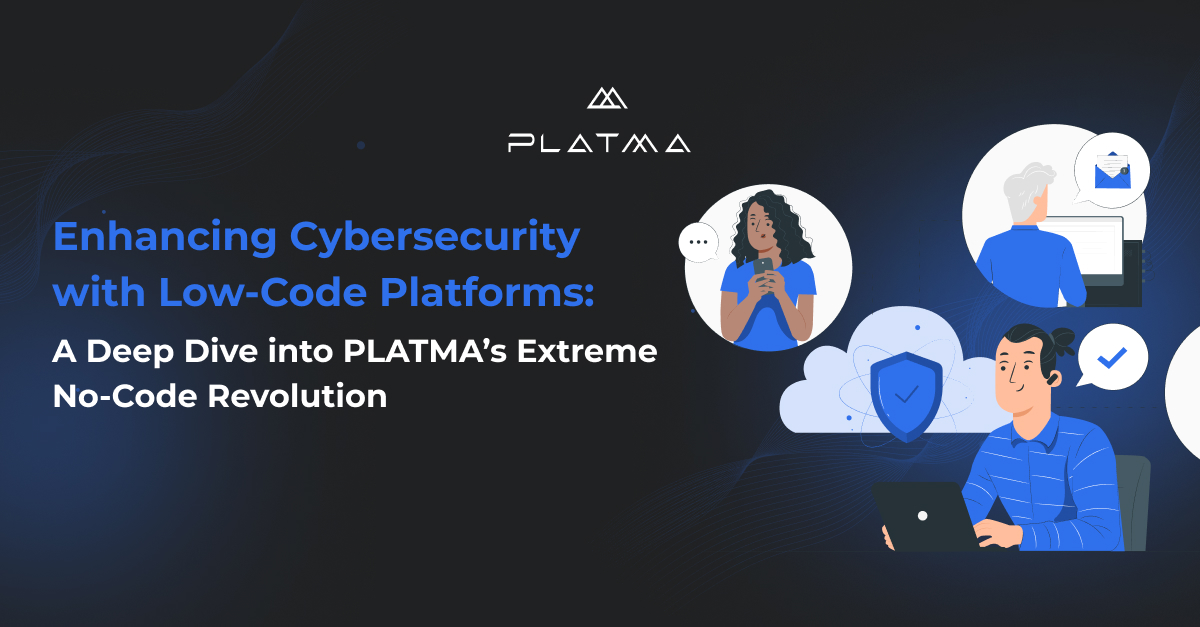In the rapidly evolving landscape of technology, businesses are constantly seeking innovative solutions to streamline their processes, boost productivity, and stay ahead of the competition. One such revolutionary trend is the adoption of Low-Code and No-Code platforms, and leading the charge is PLATMA with its Extreme No-Code capabilities. In this article, we will explore the intersection of Low-Code platforms and cybersecurity, shedding light on how PLATMA is transforming the way organizations approach application development while prioritizing data security.
The Rise of Low-Code Platforms: A Paradigm Shift in Development
Traditional application development processes often require significant time, resources, and specialized skills. Low-Code platforms, including PLATMA, are changing this narrative by empowering users to create robust applications with minimal coding effort. By providing a visual interface and pre-built components, PLATMA enables users to design, develop, and deploy applications rapidly.
Security Challenges in Rapid Development Environments
As organizations embrace the speed and efficiency offered by Low-Code platforms, it becomes imperative to address the potential security challenges associated with accelerated development cycles. Rapid application development can inadvertently introduce vulnerabilities, and organizations must safeguard their digital assets against cyber threats.
PLATMA’s Approach to Cybersecurity
PLATMA understands the critical importance of cybersecurity in today’s digital landscape. The platform integrates security measures seamlessly into its Extreme No-Code environment, ensuring users can develop applications without compromising safety.
1. Role-Based Access Controls (RBAC)
PLATMA implements RBAC to restrict access to sensitive data and functionalities based on users’ roles. This ensures that only authorized individuals have the permissions required to view, edit, or manipulate specific components of an application.
2. Encryption Protocols
All data transmission within PLATMA’s ecosystem is encrypted using robust protocols. This ensures that sensitive information remains confidential and secure, protecting against threats like data interception and unauthorized access.
3. Automated Code Review and Analysis
To mitigate potential security risks associated with user-generated code, PLATMA incorporates automated code review and analysis tools. These tools identify and flag potential vulnerabilities, enabling developers to address issues proactively during development.
4. Regular Security Updates
PLATMA is committed to staying ahead of emerging cybersecurity threats. The platform provides regular security updates and patches to address vulnerabilities promptly, ensuring that users can confidently leverage the platform’s capabilities.
User Empowerment without Compromising Security
PLATMA’s Extreme No-Code approach goes beyond simplifying the development process; it empowers users to create sophisticated applications without sacrificing security. By implementing a comprehensive cybersecurity framework, PLATMA ensures that organizations can harness the benefits of Low-Code development without exposing themselves to unnecessary risks.
Redefining Application Development with PLATMA
In the dynamic landscape of technology, PLATMA stands out as a trailblazer in the Low-Code revolution. By addressing the intersection of Low-Code platforms and cybersecurity, PLATMA accelerates application development and fortifies organizations against the ever-evolving threat landscape. As businesses continue to embrace the agility of PLATMA’s Extreme No-Code platform, they can do so with the confidence that their applications are innovative and securely built. The future of application development is here, and it’s secure, efficient, and Extreme No-Code with PLATMA.






